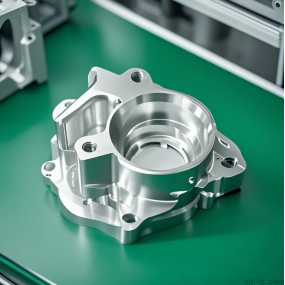Optical communication component processing refers to the process of manufacturing and processing various parts and components used in optical communication systems. These parts and components include fiber optic cables, optical cables, fiber optic connectors, fiber optic adapters, fiber optic attenuators, fiber optic couplers, etc. Quality standards are crucial in the manufacturing process of optical communication components. The following are some common quality standard requirements:  Dimensional accuracy: The dimensional accuracy of optical communication parts must be strictly controlled to ensure that the parts can be assembled correctly together. This usually requires the use of high-precision measuring equipment for verification. Surface quality: The surface quality of optical communication components has a significant impact on the transmission quality of optical signals. Therefore, the surface of the parts must be flat, smooth, and free of defects such as scratches and dents. Optical performance: The optical performance of optical communication components is crucial. For example, the refractive index, attenuation and other parameters of optical fibers must meet the design requirements to ensure efficient transmission of optical signals in the fiber. Environmental adaptability: Optical communication components must be able to operate normally under various environmental conditions, including temperature, humidity, mechanical vibration, etc. Therefore, the parts must undergo strict environmental adaptability testing. Reliability: Optical communication components must have high reliability to ensure long-term stable operation. This usually requires long-term aging testing and reliability evaluation. Safety: Optical communication components must comply with relevant safety standards to ensure that they do not pose a threat to personnel and the environment during use.
Dimensional accuracy: The dimensional accuracy of optical communication parts must be strictly controlled to ensure that the parts can be assembled correctly together. This usually requires the use of high-precision measuring equipment for verification. Surface quality: The surface quality of optical communication components has a significant impact on the transmission quality of optical signals. Therefore, the surface of the parts must be flat, smooth, and free of defects such as scratches and dents. Optical performance: The optical performance of optical communication components is crucial. For example, the refractive index, attenuation and other parameters of optical fibers must meet the design requirements to ensure efficient transmission of optical signals in the fiber. Environmental adaptability: Optical communication components must be able to operate normally under various environmental conditions, including temperature, humidity, mechanical vibration, etc. Therefore, the parts must undergo strict environmental adaptability testing. Reliability: Optical communication components must have high reliability to ensure long-term stable operation. This usually requires long-term aging testing and reliability evaluation. Safety: Optical communication components must comply with relevant safety standards to ensure that they do not pose a threat to personnel and the environment during use.
Hello! Welcome to EMAR's website!
 English
English » »
» »
 Spanish
Spanish Arabic
Arabic French
French Portuguese
Portuguese Belarusian
Belarusian Japanese
Japanese Russian
Russian Malay
Malay Icelandic
Icelandic Bulgarian
Bulgarian Azerbaijani
Azerbaijani Estonian
Estonian Irish
Irish Polish
Polish Persian
Persian Boolean
Boolean Danish
Danish German
German Filipino
Filipino Finnish
Finnish Korean
Korean Dutch
Dutch Galician
Galician Catalan
Catalan Czech
Czech Croatian
Croatian Latin
Latin Latvian
Latvian Romanian
Romanian Maltese
Maltese Macedonian
Macedonian Norwegian
Norwegian Swedish
Swedish Serbian
Serbian Slovak
Slovak Slovenian
Slovenian Swahili
Swahili Thai
Thai Turkish
Turkish Welsh
Welsh Urdu
Urdu Ukrainian
Ukrainian Greek
Greek Hungarian
Hungarian Italian
Italian Yiddish
Yiddish Indonesian
Indonesian Vietnamese
Vietnamese Haitian Creole
Haitian Creole Spanish Basque
Spanish Basque












